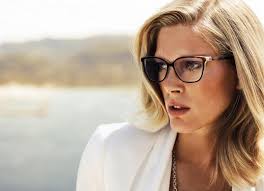
The first actual documented case of eyeglasses was during the
thirteenth century, by Giordano da Pisa [Jordan of Pisa, Italy].
However, as he chose to keep the invention to himself, roughly twenty
years later, a colleague of his, Alessandro della Spina of Pisa
recreated the new novelty and shared them with the world. Another
"father of optometry", leading the way for the creation of glasses was
Roger Bacon. However, long before Bacon started his experiments
magnifying bits of glass for lenses, or it was presented to the Italian
public, traces of early optical experimentation are known to be from
early Chinese, and ancient Egyptian civilizations. Many took gemstones,
water, and of course glass, to bend, twist and shape light to better
effect the eye. However, it wasn't until the thirteenth century that the
concept of prescription eyeglasses came to play. There is also new
evidence that shows China did a lot of importation of glasses during the
fifteenth century.

The next several centuries solidified
eyeglasses as a proper tool of vision correction. The times of having to
hold the lenses up to one's eyes were long gone, and the typical design
at this time would fold at the bridge [unlike our current design that
allows arms to wrap around our ears]. This caused a lot of arched necks
for the glasses-wearers of the time period. As time went on, the models
became more user-friendly in the eighteenth and nineteenth centuries -
particularly once arms were presented. The glasses frames started to be
marketed more, and therefore practical needs were addressed, such as
size and weight.
The styles for eyeglasses frames during the
twentieth century were the turning points to the style of the time
period. The 1920s allowed for a concession of glasses, whereas frames of
that time period were perfectly applicative to the "flapper girl" style
of the era. The style drastically changed in the 1950s, with the rise
of the angled corners we now refer to as the cat-eye style. The fifties
and sixties brought out larger plastic frames in the coveted wayfarer
style, before the 1970s brought back square edges. The 1980s and
nineties focused primarily on awkwardly fitting clothes, colors, and of
course... glasses. The Sally Jesse Raphael glasses became all too
popular, and just as quickly, met it's demise. It has not been until the
twenty-first century that eyeglasses have started the recycling phase.
While new developments likely continue, most of the styles remind us of a
different time, from the past.
The evolution of prescription
eyeglasses has grown insurmountably since they were first invented
centuries ago. Just as many technological advancements, corrective
eyewear keeps getting smaller, and even more convenient. They went from
heavy, cumbersome objects, to intricate optical corrections, such as
multifocal glasses, contacts, and even surgeries to restore vision
needs. Of course we do not know where research will take us, and can
only expect even better options in the future. This was the current
evolution of eyewear.
No comments:
Post a Comment